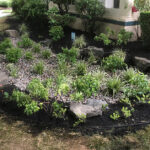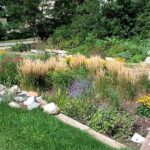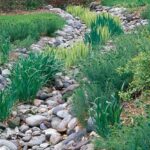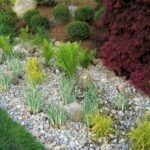Rain gardens are a great way to enhance the beauty of a landscape while also helping to manage stormwater runoff. These gardens are specifically designed to capture rainwater and allow it to slowly filter back into the ground, rather than flowing into storm drains and potentially causing pollution in rivers and streams. When it comes to designing a rain garden, there are a few key factors to consider.
One of the most important aspects of rain garden design is the location. It’s crucial to place the garden in an area where it can capture runoff from surrounding surfaces, such as roofs, driveways, or sidewalks. This will help ensure that the garden gets plenty of water during storms, allowing it to effectively manage excess water and prevent flooding.
The size and shape of a rain garden will also play a significant role in its effectiveness. The garden should be large enough to capture and store a substantial amount of water, but not so large that it becomes overwhelming to maintain. In terms of shape, an elongated or kidney-shaped design is often recommended, as it allows for a more natural flow of water through the garden.
When it comes to plant selection for a rain garden, native plants are typically the best choice. These plants are well-adapted to the local climate and soil conditions, making them more resilient and better able to thrive in a rain garden setting. Native plants also tend to have deep root systems, which can help to absorb more water and prevent erosion.
In addition to selecting the right plants, proper soil preparation is essential for a successful rain garden. The soil in a rain garden should be well-draining, with a mix of sand, silt, and clay to help facilitate water infiltration. Adding organic matter, such as compost or mulch, can also improve soil structure and water retention capabilities.
Finally, incorporating a variety of textures, colors, and heights in your rain garden design can help create a visually appealing landscape that attracts pollinators and other beneficial wildlife. Adding a mix of flowers, grasses, shrubs, and trees can help increase biodiversity and create a more dynamic and vibrant garden space. By carefully considering these key factors in rain garden design, you can create a beautiful and functional landscape feature that helps to manage stormwater runoff and protect local waterways.










